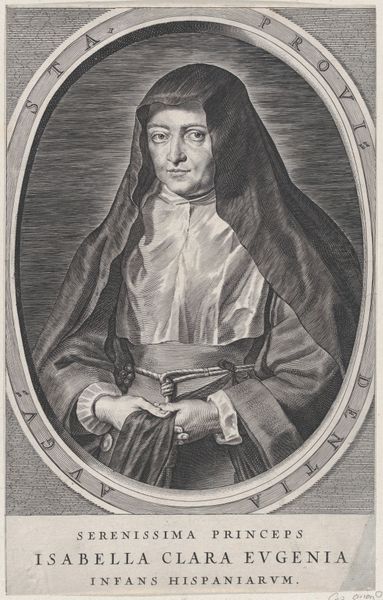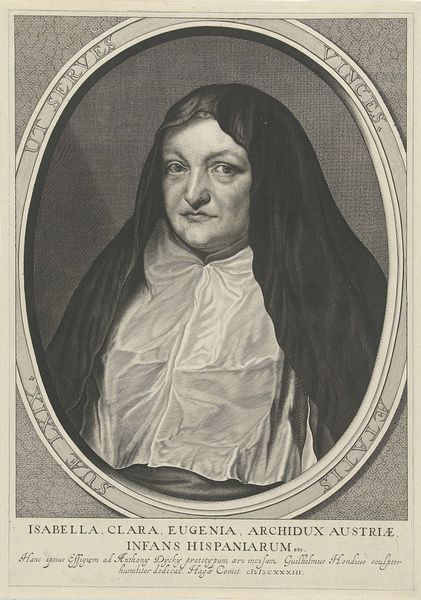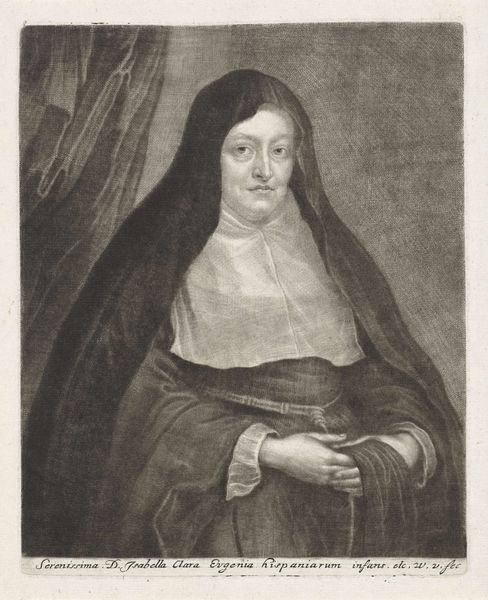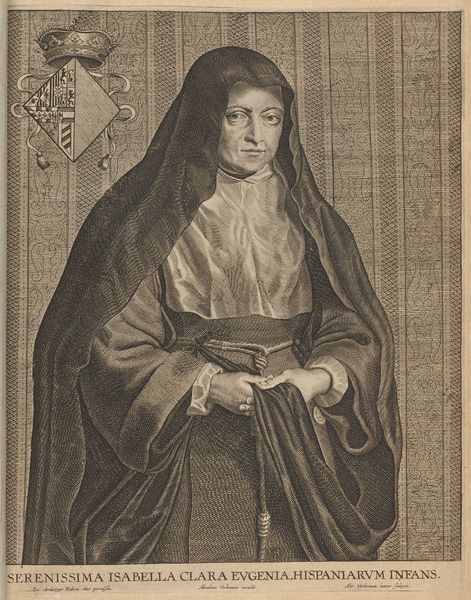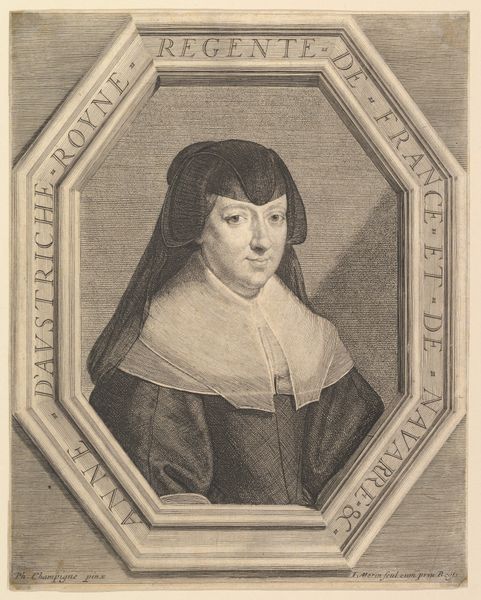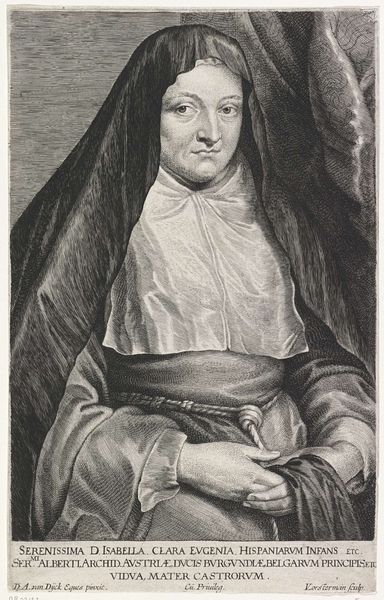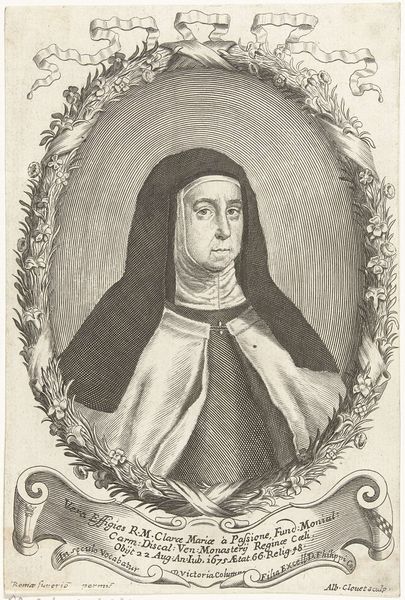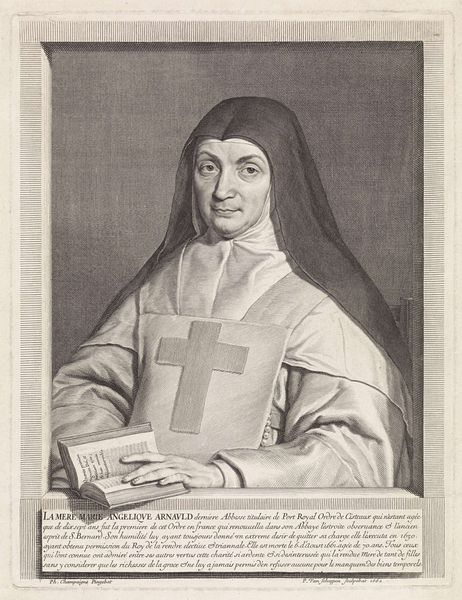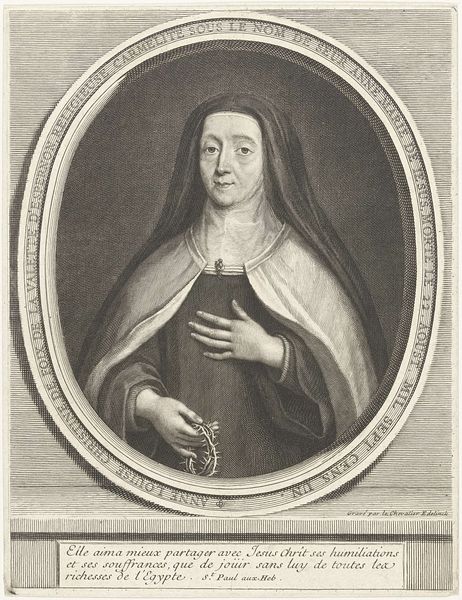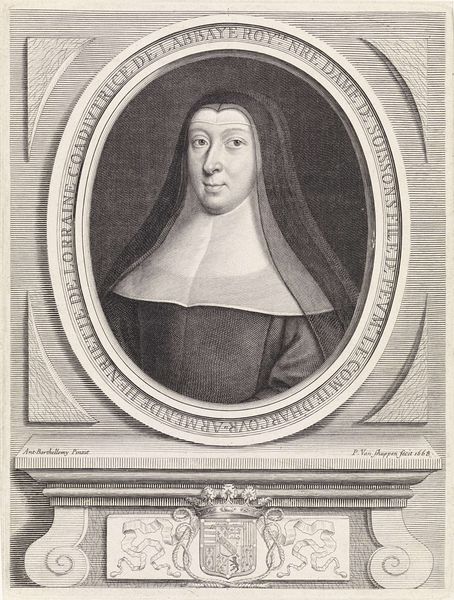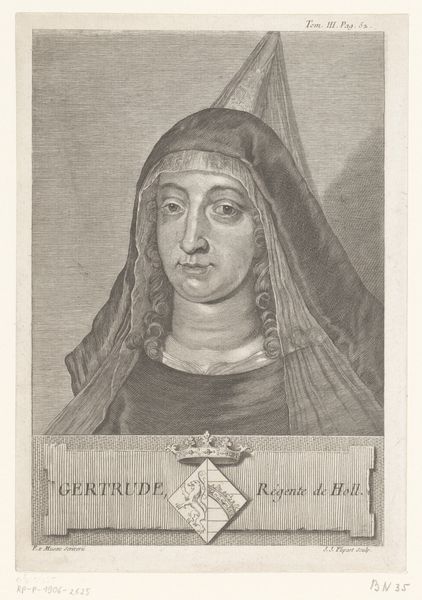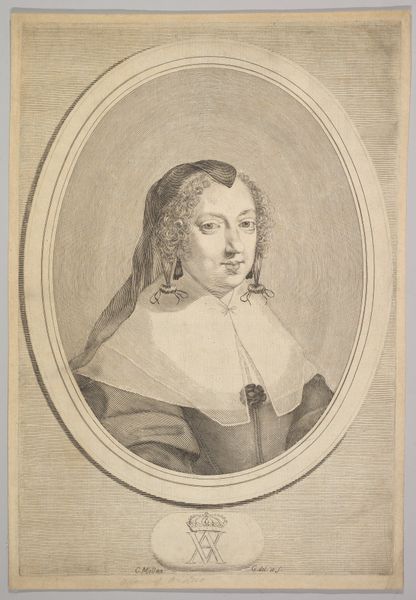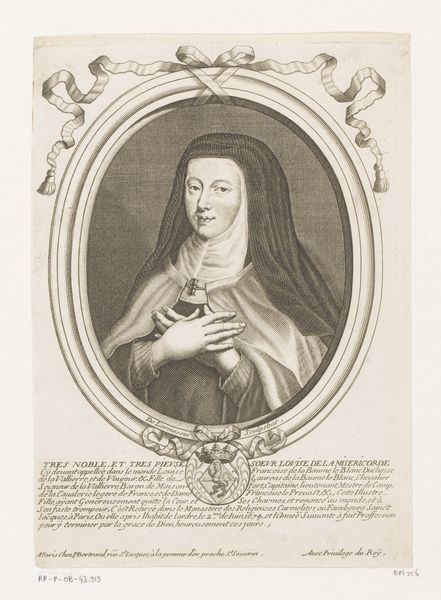
Portrait of Archduchess Isabella Clara Eugenia, Spanish Regent of the Low Countries, as a Nun 1623 - 1661
0:00
0:00
drawing, print, intaglio
#
portrait
#
drawing
#
baroque
# print
#
intaglio
#
history-painting
#
academic-art
Dimensions: Sheet (Trimmed): 16 1/16 × 11 5/16 in. (40.8 × 28.7 cm)
Copyright: Public Domain
Curator: This is a rather striking print, dating from between 1623 and 1661, depicting Archduchess Isabella Clara Eugenia. It resides here at the Metropolitan Museum of Art. Editor: Yes, there is a quiet intensity. The stark contrasts of the intaglio printmaking highlight her features, giving her a contemplative, almost severe look. It's mostly black and white but her piercing stare and hooded veil hold my attention. Curator: The image certainly invites contemplation. Consider Isabella’s trajectory: daughter of Philip II of Spain, Governor of the Spanish Netherlands, and later in life, a nun after the death of her husband. This portrait, presenting her in the habit of a Poor Clare nun, was likely circulated as a representation of her piety and continued influence, even in religious life. Images like this played a crucial role in shaping her public persona and justifying Habsburg rule. Editor: It is all in the image. The oval frame almost suggests a reliquary or devotional object, doesn’t it? Encasing her in this way elevates her beyond just a portrait. Even her clothing signifies transformation – the simple rope belt alluding to monastic vows…it is powerful symbolism. Curator: Precisely! And we should recognize how carefully crafted these visual cues are. Consider the choice of depicting her as a nun. Following her husband's death in 1621, Isabella adopted the religious habit but maintained governance of the Netherlands, merging secular power with religious authority in a fascinating political strategy. The circulation of her image thus underscored both personal devotion and enduring dynastic power. Editor: So, it's less a depiction of personal religious feeling, and more like political iconography cleverly packaged for public consumption. Although, looking closely, one can't help but wonder what was in her heart during this major shift in her life. The human drama is palpable, which adds depth to its purpose. Curator: Indeed, the duality is what makes it so compelling. A carefully staged representation of religious piety used as a tool to reaffirm Habsburg power during a volatile period. Thank you for teasing out the subtle personal drama implied in this portrait! Editor: My pleasure! It really illuminates how personal journeys can get entangled with larger power structures. A reminder to seek those multilayered narratives.
Comments
No comments
Be the first to comment and join the conversation on the ultimate creative platform.
